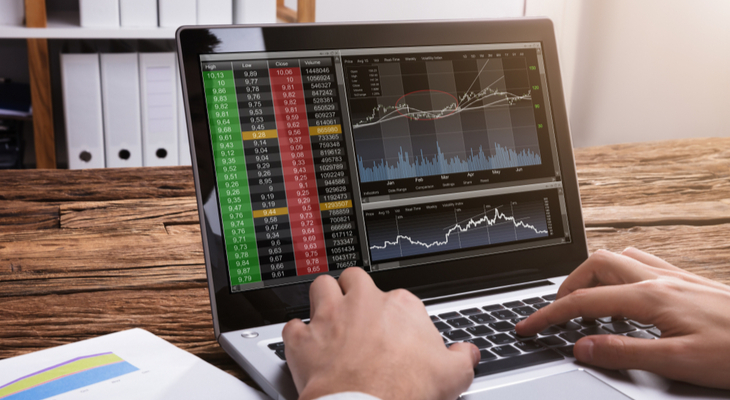A Review Of Exante’s Web Trading Platform
Established in 2011, Exante is an EU-based brokerage that was founded by Alexey Kirienko, Anatoly Knyazev and GatisEglitis. The investment firm offers its clients direct market access to over 600,000 financial instruments through a single multi-currency and multi-asset account. Their trading platform also provides instant access to over 50 financial markets and is designed to service professional brokers, asset managers, traders, banks, and other financial institutions.
Aside from having a downloadable trading platform, Exante further offers users a web trading platform that functions almost identically. In order to start using Exante’s web platform, a trader needs to first register an account with the broker. Then, they can simply go to the Client’s Area and click on the Web Platform button.
In this review, we will take a look at the features of Exante’s web trading platform, what it provides, and what traders can do with it. For those interested in this topic, make sure to keep reading this review for more information.
Table of Contents
Features Of Exante’s Web Trading Platform
Exante’s web platform provides traders with a fast and convenient way to start trading right in their web browser. This means that traders can access financial markets anytime and anywhere, provided there is an internet connection. The web trading platform is also intuitive and easy to use, and it is further equipped with powerful charts that can help visualise data. Instead of downloading the program to trade, the only thing a user needs to do is to open up Exante’s terminal in their favourite browser. This can be either Chrome, Safari, Firefox or even Opera.
Instruments
The Instruments tab in Exante’s web trading platform contains all the financial instruments and markets that are available to traders. Additionally, the financial instruments are grouped by their type and sorted in alphabetical order. Although this may sound overwhelming at first glance, especially for novice traders, Exante includes a search bar in their trading platform where traders can start typing in an instrument’s name or ticker. A drop-down list will then pop up and show the instruments available. Traders can even use the list to navigate further to expand the nodes of the Instruments tree. Some financial instruments that users can start trading with include the Malta Stock Exchange, American Airlines Group, Apple, AAON, the Milan Stock Exchange and more.
When clicking on an instrument, traders can switch it in the Time & Sales, Market Depth, Order, andChart panels on the web platform. To add the instrument to the Quote Monitor, traders only need to drag and drop it.
It is important that users keep in mind that options are not visible in the Instruments tree by default. This means traders must visit the Settings panel to flip the options switch to show options. The loading process may take up to several minutes depending on the connection speed of your internet. If traders are able to see the progress bar right above the search field, this indicates that the Instruments tree is currently updating information.
Charts
One wayExante’s web platform allows traders to visualise financial data is through their Chart. The chart can be customised by using different time intervals. Traders can further add drawings or indicators, as well as choose a chart style that fits their trading style or preferences.
Another thing that makes Exante’s web trading platform unique is that it allows traders to share their trading journey with friends. This is done by creating a shareable link right from the address bar. The shareable link not only features the instrument the trader is sharing but also the timeframe as well. The desired time frame can be either 1, 5, 10 or 15 minutes; 1, 4 or 6 hours; 1 day; 1 week or even 1 month.
If the other person does not have an Exante account, that is all right too. Exante allows traders the option of sharing a link to a demo chart, meaning people without Exante accounts can still access it. That said, the quotes in the demo charts are delayed for at least 30 minutes, so they are not live prices, which may affect a trader’s trading strategies.
Quote Monitor
As its name suggests, Exante’s Quote Monitor provides traders with real-time data quote streams. Traders can drag and drop up to 100 financial instruments to the Monitor in order to keep up with real-time price fluctuations. Quote Monitor essentially tracks all vital data relating to a trading session. This includes the instrument name and description, the bid/ask/mid prices and bid/ask sizes, the last quote update time, and the price changes in percentage and absolute terms, in addition to the quote feed status. Traders can further customise the type of information they see in the panel by clicking the gear sign at the top, which allows them to pick the columns they want to be shown.
Time and Sales
The Time and Sales panel displays trade data for a chosen instrument that is part of a specific exchange. Every row in the panel represents tick-by-tick data which is provided in real-time by the exchange. Information includes the trade timestamp, the average price, and the total size. The most recent trades will always be situated on top, whereas the others will be arranged by time in descending order. In the case a financial instrument lacks any kind of data, Exante will show a warning sign right in the window, which makes it obvious to traders who are using the platform.
Market Depth
This is the name of the module that provides a list of active limit orders. These orders are grouped by trading side and arranged by price. One aspect that makes Exante’s market depth stand out is that the rows in the module are colour-coded, meaning traders can visualise the histogram by its total size. This histogram sums up the total size starting from the best bid and ask price.
Another thing that Market Depth allows traders to do is analyse the market conditions by discovering price levels and support/resistance zones. According to Exante, they do not aggregate data from multiple exchanges in a single view. This, therefore, allows traders to compare trading situations that are on different exchanges.

:max_bytes(150000):strip_icc()/chart-1905224_19201-92de2257433344a891781f064ceaf845.jpg)

